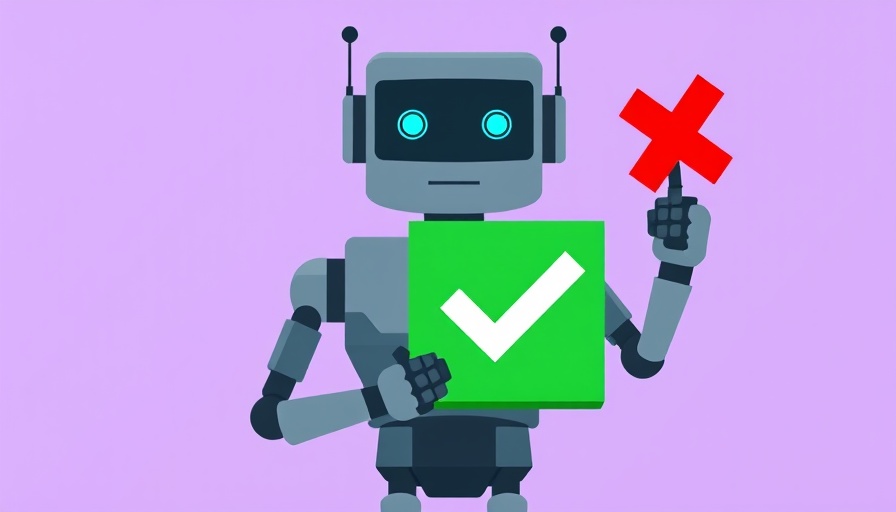
Understanding the Risks of Open Model Licenses
This week, Google celebrated the release of its new AI model family, Gemma 3, showcasing its exceptional efficiency and capabilities. However, amid the excitement, a wave of discontent rose among developers sharing their concerns on social media platforms, particularly X. The crux of their anxiety? The restrictive licensing tied to Gemma 3 renders commercial applications of these models a precarious affair.
Issues like this aren't isolated to Google. Major players in AI, such as Meta, employ unique licensing agreements for their openly available models, sending ripples of concern through the developer community. Especially for smaller firms, the threat of unexpected legal ramifications from these licenses feels like a looming shadow that could significantly disrupt their operations.
The Fine Line Between Open and Proprietary
Nick Vidal, the head of community at the Open Source Initiative, highlighted the discomfort created by the convoluted and restrictive nature of these so-called 'open' AI models. He pointed out that while these models are marketed as open, companies often impose stringent legal frameworks that act as barriers to adoption for businesses aiming to incorporate AI models into their services. This dichotomy raises the question: what does 'open' really mean in the context of AI?
AI startups have solid reasons for adopting proprietary licenses rather than sticking to industry benchmarks like the Apache or MIT licenses. For instance, the startup Cohere explicitly positions its offerings for scientific, as opposed to commercial, endeavors. Consequently, organizations must navigate these uncertain waters if they wish to adopt advanced technologies like Gemma or Meta’s Llama for their commercial applications.
The Legal Labyrinth of AI Licensing
Examining the licenses more closely reveals a troubling pattern. Meta’s Llama 3 license, for example, constricts developers from using any outputs generated to enhance any model outside of Llama 3, creating a significant restriction for innovation. Furthermore, companies boasting over 700 million monthly active users must seek additional permission to deploy Llama models, which serves as another hurdle for large-scale adoption.
Meanwhile, while Gemma’s licensing terms appear less burdensome, Google retains the power to “restrict usage” of the model based on its own interpretation of policy violations, leaving many unsure of where they might draw the line.
The Fear of Unintended Consequences
Florian Brand from the German Research Center for Artificial Intelligence expressed a critical view on the discussion of these licenses, arguing that such agreements cannot be classified as truly open source. “Many smaller companies lack the resources to navigate custom licenses, forcing them to seek models with universally accepted licensing standards,” Brand stated, emphasizing how legal uncertainties stifle innovation.
Others in the AI community, including Han-Chung Lee of Moody’s and Eric Tramel from Gretel, support the notion that these unique licenses compromise the usability of the models in real-world commercial scenarios. Given the fears of license enforcement, these models risk being viewed as 'trojan horses' that could lead to unexpected legal challenges for developers.
Shifting the Paradigm: Towards Genuine Openness
Despite some models achieving widespread traction despite their in-house licenses—like Llama, which has been integrated into products across industries—there is a strong sentiment that broader adoption could be achieved if these models were offered under permissive licenses. Yacine Jernite from Hugging Face proposed a shift towards open licensing frameworks, advocating for enhanced collaboration between AI providers and users to establish universally accepted terms.
“The existing environment produces confusion, ambiguous terms, and misrepresentations of openness,” Vidal remarked, echoing the sentiments of many affected by these licensing practices. He called for the industry to align with established open-source principles to foster a genuinely equitable ecosystem.
Conclusion: Paving the Way for Accessible AI
For developers, researchers, and businesses hoping to leverage AI technologies, understanding the nuances of these licenses is crucial. Until the industry shifts towards transparent and truly open licensing practices, many innovative tools may remain inaccessible due to fear of legal repercussions. By advocating for clearer terms and actively pushing back against restrictive clauses, stakeholders can help foster a landscape ripe for growth and creativity in AI.
So as a developer or a business looking to dive into the AI market, explore these licenses diligently, and always stay informed on emerging standards and practices to ensure you’re leveraging the best tools without jeopardizing your operation.
 Add Row
Add Row  Add
Add 




 Add Row
Add Row  Add
Add 

Write A Comment